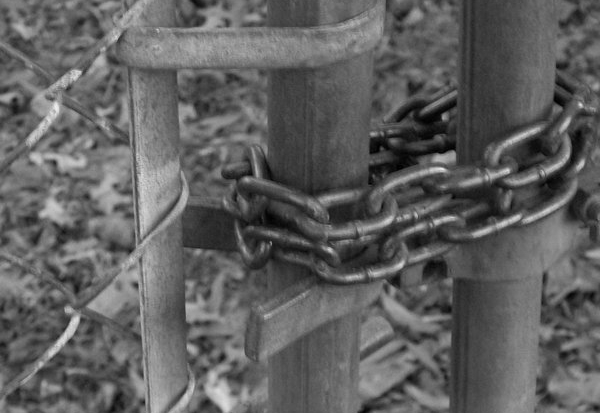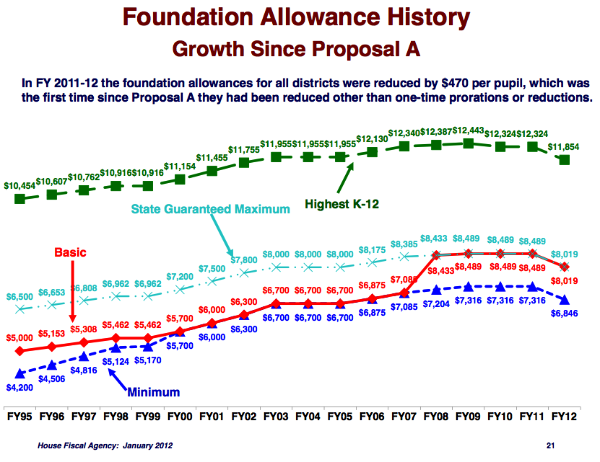Follow your tax money (right into the pockets of for-profit school shareholders)

Yesterday, the same day that we learned that the Snyder administration had bowed to the suitable outrage and national media attention they had received over the closing of the Buena Vista school district due to lack of money and had released funds, we also learned that two Michigan high schools are closing as well. These to high schools, Albion and Inkster, won’t reopen in the fall because their school districts cannot afford to do so. In Albion, “officials hope to reach a deal with nearby Marshall for students to attend high school there”. In Inkster, the high school will be run by a charter.
And yet, in school districts across the state, we see new buildings and renovations going on. Flat-screen televisions in the hallways, brand new campuses, state-of-the-art sports facilities. How is this possible? How is it that students in one district can go to school in a cutting-edge, shiny new facility while students in other districts see their schools shuttered for lack of funding? It can be explained by how we fund our schools and the shiny new buildings and hallway televisions don’t always tell the full story.
In 1994, Michigan voters approved Proposal A which dramatically impacted how much of school funding came from local sources, primarily property taxes and how much from the state. Before Prop A, 63% of school funding depended on local sources. In 1995, that dropped to 20%. This was intended to equalize the disparity between the wealthiest districts and the poorest districts. And it did a very good job of doing that. Prop A created “foundation grants” meant to equalize per-pupil funding. However, because taxpayers can agree to tax themselves to increase school funding, some school districts get WAY more than others. Here’s the data from the 2011-12 school year:

[Source: Michigan House Fiscal Agency (pdf)]
As you can see here, the top funded schools received $11,854 versus the lowest receiving $6,846. That’s an over $5,000 PER STUDENT difference.
But the shiny new schools you see are the result of separate funding sources. These come from bonds and school districts must go to the voters to have additional taxes levied to pay for these as well. In some school districts, this happens. In my area, the Dexter voters passed a nearly $48 million infrastructure bond measure and now you see a newly refurbished sports complex just one block from where I live. New track. New football field. New concession stand and locker room facility. Lights bright enough to tan by and a sound system the drowns out my own. They bought a couple of houses to make way for their expansion.
Bloomfield Hills just passed a $58 million millage. In that area, you can get a sense of what that means when the article about it says, “A homeowner with a $400,000 home will likely pay $232 a year.” For most school districts, there aren’t many homes worth that much. In Bloomfield Hills, it’s “average”. In Waverly, near Lansing, 13% of the voters showed up recently and passed a $20 million millage that will be used for “security and technology upgrades, including wireless Internet access in all buildings and a digital video broadcast system at the high school”. This follows on the heels of a $49 million school building improvement bond they passed in 2000. My friend Mark Mudry, the secretary of the Eaton County Democratic Party, put it this way:
It’s sad that some school districts are broke and closing while some get everything they ask for. Its a case of the “Haves and the Have Nots”.
He’s absolutely right.
But, here’s the thing: these shiny new facilities don’t always tell the full story. They are the result of infrastructure bonds that are separate from school funding. And sometimes you can have a brand new school without the funds to operate it properly. The most glaring example of this is the William Parker High School in Howell, Michigan. Completed in 2007 to the tune of $70 million, it is a state-of-the-art facility equipped with cutting-edge technology. And it is vacant. The Howell school district does not have enough money to run it so, after opening for the 2007-2008 school year, they closed it and it remains vacant to this day.
What we’re seeing is a decades-old effort to defund schools to the point where charter schools that funnel money into private corporations become attractive. With a “parent trigger” bill under consideration by our state legislature, some of these brand new facilities could literally be turned over to a for-profit company to be used to educate kids for a profit. This legislation, S.B. 83, forces the school district to essentially give the school building to the charter school. Specifically, it says, “The school district that owns the school building shall lease the school building to the conversion school for $1.00 per year”. The most bitter irony is that the taxpayers would keep paying for the bond for years, even decades, while the for-profit charter school corporation gets to use nearly free of charge.
Please don’t allow yourself to see the demise of public education in Michigan as unintentional or accidental. What you are seeing is the result of decades of planning by those that fund the Mackinac Center — groups like the DeVos family, the Koch brothers and others — to end public education and shift all of that 80% of statewide revenues into private school bank accounts. The move to equalize funding under Prop A made every student, rich or poor, worth an equal amount of money or, more accurately, profit. The poorest school districts are the easiest targets which have far fewer resources to put up a fight. Yet the number of dollar signs on their students’ heads are the same as for wealthy students in brand spanking new schools. All of the pieces were in place to execute this plan. All the corporatists were waiting for was for the state House, Senate and Governor’s office to all be taken over by Republicans. And, in 2010, we handed them that gift.
Get ready for 2014. That’s when we retake control.
[CC image credit: ~kawaii-bubble-wrap | deviantART]



